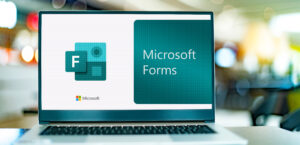What is a Prototype in Software Development?
Bringing a software idea to life starts with more than just code, as it begins with a vision that needs shaping, testing, and refining. One of the most effective ways to bridge the gap between concept and creation is through prototyping. A prototype in software development serves as an early model of the final application, enabling developers, stakeholders, and users to interact with and provide feedback on the product before it’s fully built.
A prototype in software development is a simplified version of a system or application, designed to demonstrate core features, workflows, and user interactions. It can range from a basic wireframe or mockup to a partially functioning piece of software. The goal is not to deliver a complete product, but rather to know how to validate a software idea with a prototype, test assumptions, and explore usability early in the development cycle. This approach can help you refine your ideas and align on expectations before investing significant resources.
Development teams can reduce risk, accelerate project timelines through prototyping staff augmentation, and enable innovation using prototypes. Early feedback uncovers potential issues and helps prioritize features that matter most to users. This leads to smarter design choices, cost savings, and a clearer development path. It can also help your organization accelerate Digital Transformation by quickly validating ideas and aligning technology with business goals.
What is a Prototype?
A prototype in software development is an early, simplified version of a product that demonstrates its core features, functionality, and user experience. It’s not meant to be a finished solution, but rather a tool to test ideas, gather feedback, and make informed design decisions before full-scale development begins. A prototype allows your team to assess the feasibility of features and improve the product direction early on by simulating key interactions.
The primary purpose of a prototype is to evaluate usability, flow, and functionality without building the entire system. It helps uncover design flaws, validate assumptions, and ensure that the team is solving the right problem in the right way. Whether it’s a clickable wireframe or a partially working interface, the prototype serves as a communication bridge between stakeholders, designers, and developers.
When comparing a prototype vs proof of concept in agile development, the differences lie in their focus. A Proof of Concept (PoC) is typically used to verify whether a specific technology or solution is viable, without concern for user experience. A prototype, on the other hand, emphasizes how users interact with the system. Meanwhile, a MVP (Minimum Viable Product) is a working product with just enough features to satisfy early users and validate the market.
The benefits of a prototype in software development include faster feedback loops, reduced risk, better user alignment, and cost savings. Instead of waiting until development is complete, teams can adapt quickly based on what they learn from the prototype. This iterative process not only accelerates innovation but also results in more user-centered products with the best qualities in mind.
Why is a Prototype Crucial for Software Innovation?
Software development is filled with uncertainty. Each stage presents its own set of software development problems, from technical feasibility to user expectations and business goals. Many projects fail not because of poor execution, but because they pursued the wrong idea or misunderstood user needs. Your business needs a prototype before software development begins to surface risks early and make better decisions efficiently.
One of the biggest threats to any software project is the risk of building something that doesn’t work as intended, or worse, that no one wants to use. A prototype helps teams test the technical feasibility of core features, validate workflows, and explore different design approaches without heavy investment. It also allows users and stakeholders to provide feedback before spending major time and money.
Engaging users early and testing concepts quickly lets your company uncover usability issues, mismatched expectations, or functionality gaps before they become costly problems. Reduce project risks with rapid prototyping services by identifying what works and what doesn’t at a stage where changes are still easy to make. This prevents wasted effort on features that don’t add value or align with business goals.
Real-world benefits of prototyping include faster development cycles, improved collaboration, and higher product-market fit. Teams can work more efficiently with a shared understanding of the vision, and stakeholders gain confidence through early visual and interactive representations of the product. It also encourages innovation, as ideas can be tested and refined without fear of high cost or failure.
In short, why businesses need a prototype before software development comes down to one powerful truth: the earlier you learn, the better you build. Prototypes turn abstract ideas into tangible experiences that drive clarity, confidence, and smarter investment. In an industry where change is constant and user expectations are high, prototyping is very much needed for innovation and long-term success.
6 Key Steps in the Prototype Process
Creating a prototype is a strategic process that helps teams validate ideas before full development begins. It’s a critical step that builds clarity, reduces risk, and improves decision-making throughout the development lifecycle. Identifying what works early on also allows prototyping to help maximize ROI by focusing resources on solutions that deliver real value.
- Define Objectives and Gather Insights
Before designing a prototype, it’s essential to understand both the goals and the users. Start by defining what you want to achieve. It can be about testing a feature, validating a concept, or exploring user flow. At the same time, gather insights through user research, competitor analysis, and market trends. Interview users, identify pain points, and create personas to align your design with real needs.
- Choose the Type of Prototype
Select the right prototype based on your goals. Use low-fidelity sketches for quick layout testing or high-fidelity mockups for detailed user interactions. Choosing the right type shapes how much detail you include and the kind of feedback you’ll receive.
- Design the Prototype
This is where your ideas begin to take form. Based on your requirements and research, design the screens, user flows, and interactions that represent the core experience. Focus on clarity, simplicity, and usability. Keep in mind that you’re not building the final product. Only include the features necessary to test your assumptions and validate ideas before full development. Tools like Figma, Adobe XD, or InVision are excellent for building responsive and interactive prototypes quickly.
- Test and Gather Feedback
Share your prototype with users and stakeholders to observe how they interact with it. Focus on learning by watching for confusion, incomplete tasks, or unexpected behavior. Gather both qualitative and quantitative feedback to identify usability issues and gauge whether the prototype meets its goals.
- Iterate and Refine
Use the feedback to improve the prototype, simplify workflows, fix friction points, and clarify interactions. Multiple rounds of testing may be needed. This iterative cycle helps you catch flaws early and move closer to a solution that users value and developers can build with confidence.
- Prepare for Development
With a well-tested and refined prototype in hand, you’re now ready to move into development. At this point, document key decisions, user flows, and interaction rules. Your prototype acts as a blueprint that developers can reference throughout the build. It ensures everyone is aligned on what needs to be built, reducing ambiguity and miscommunication during development.
When to Use a Prototype in Software Projects
Using a prototype in software projects is a smart way to test ideas quickly and mitigate development risks. For any software development company aiming to stay competitive and innovative, prototyping is a key component of an effective software innovation strategy. It helps teams accelerate innovation with a prototype software development approach. Here are five key instances when using a prototype is highly beneficial in a software project:
- When Validating a New Concept or Idea: A prototype helps test whether a new idea resonates with users before full development begins. This reduces the risk of building a product no one wants.
- During Requirements Gathering and Clarification: Prototypes make abstract requirements easier to understand for both developers and stakeholders. This ensures better alignment and fewer misunderstandings in the future.
- When Demonstrating Feasibility of Technology or Design: A prototype can quickly show whether a technical solution or design direction is viable. It helps identify constraints early and refine the technical approach.
- To Gain Stakeholder or Investor Buy-in: A working prototype gives stakeholders something tangible to react to, increasing engagement and trust. It’s often more persuasive than a written proposal.
- For Early User Testing and Feedback: Prototypes allow users to interact with the product early and offer actionable feedback. This supports iterative improvements before final development.
How Rapid Prototyping Services Support Software Prototypes
Rapid prototyping services play an important role in transforming early ideas into functional models with speed and precision. These services bring immediate access to the skills and tools needed to quickly design, build, and test prototypes. It also helps your company to validate its concepts without long-term commitments. Using short-term development teams for prototype projects guarantees that your business can stay agile while focusing on innovation instead of operational overhead.
One of the core benefits of rapid prototyping is its focus on speed, agility, and cost-efficiency. Building a prototype quickly allows organizations to respond quickly to market demands and changing user needs. This swift iteration process reduces the cost of failure, as teams can test and refine ideas without over-investing in full-scale development. The ability to pivot or scrap features early contributes significantly to better product-market fit and smarter resource allocation.
At i3solutions, we champion a highly iterative and collaborative approach to prototyping. Our rapid prototyping services are designed to integrate seamlessly with a client’s innovation cycle, delivering tangible results in short timeframes. We can offer the ability to scale your IT team with rapid prototyping experts and empower your clients to move from ideation to validation with our guidance.
The use of flexible staffing for prototypes in IT projects allows teams to scale up or down based on specific needs. This model gives your company access to specialized talent without the burden of permanent hires, aligning perfectly with the fast-paced nature of prototype development. Short-term development teams for prototype projects bring in exactly the right expertise at the right time, supporting agile methodologies and reducing delays in product experimentation.
Why i3solutions is the Right Partner for Your Software Prototype
At i3solutions, we bring nearly 30 years of experience helping enterprise and mid-size organizations turn bold software ideas into reality. Starting with a strategic prototype, we can help you understand what your organization needs in this digital age. Our deep industry knowledge and technical expertise allow us to support clients at every stage of the innovation journey, making us a trusted partner in rapid prototyping services.
We take a custom-tailored approach to every project. Instead of applying a generic process, we carefully assess your business objectives, technology environment, and stakeholder expectations. This enables us to create purpose-built prototypes designed to validate feasibility, drive internal alignment, and lay the groundwork for you to succeed in your operations.
Our team excels in delivering fast, adaptable prototypes that test new ideas without overextending your budget or internal resources. Whether you need a technical proof-of-concept or a functional model to demonstrate core features, our rapid prototyping services are built to accelerate innovation with prototypes in software development. This will help you move from ideation to validation quickly and efficiently.
We also offer flexible staffing for prototypes in IT projects, giving you access to the right talent exactly when you need it. Whether it’s a short-term assignment or a dedicated agile team for a time-sensitive initiative, you can hire on-demand rapid prototyping specialists to fit your unique project needs. Whatever the case may be, our scalable staffing model will help you with your budget, goals, and timelines. From concept to full application rollout, i3solutions provides the end-to-end support needed to accelerate application development in your IT department and turn your vision into a reality.
Bring Your Ideas to Life with i3solutions’ Expert Prototyping Services
Prototyping is a vital step in software development that helps reduce risk, clarify requirements, and ensure your project is built on a solid foundation. You can test your ideas early, you can identify potential issues, validate feasibility, and make better decisions. This will ultimately save you time and your company’s resources. With i3solutions, you can streamline development cycles with rapid prototyping tailored to your goals.
For IT leaders looking to drive smarter project outcomes, prototypes offer a low-commitment way to explore new ideas and gain stakeholder buy-in. i3solutions provides the expertise and agility needed to build functional, impactful prototypes that guide your innovation strategy. Our cost-effective rapid prototyping talent solutions for IT teams ensure you get the right skills, right when you need them.
Ready to bring your next big idea to life? Explore i3solutions’ Rapid Prototyping Services and see how we can support your prototype in software development from concept to execution. Contact us today to schedule a consultation and take the next step toward faster, smarter software innovation.











